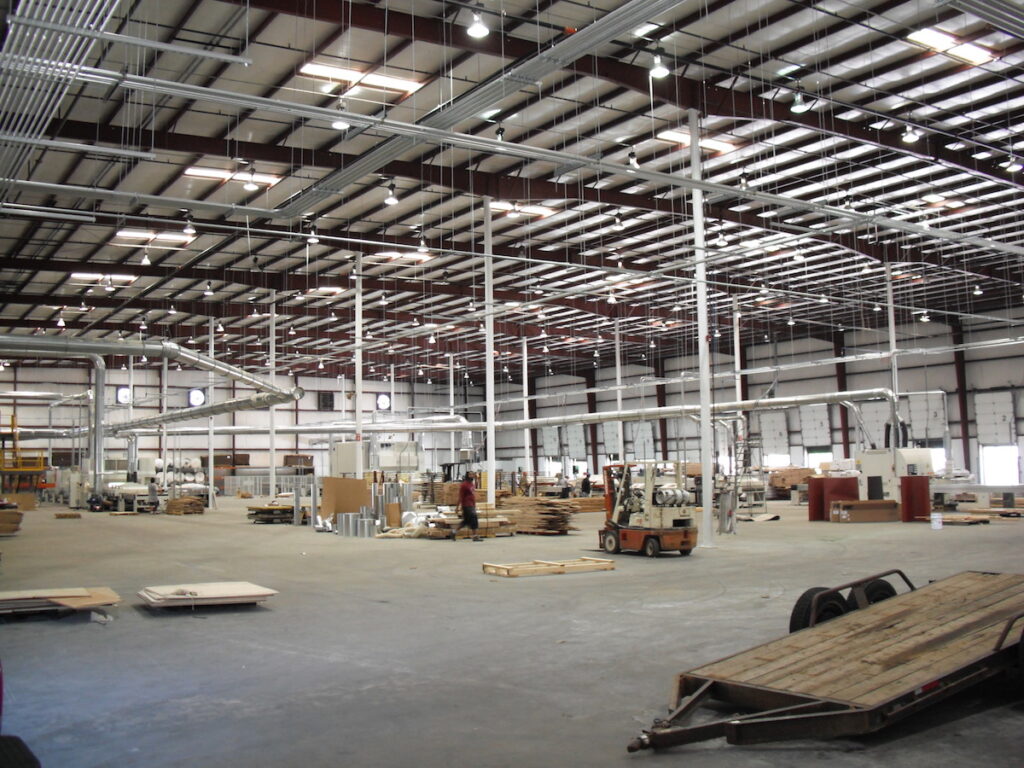
This case study looks at a reverse air baghouse installed at a manufacturing plant to capture wood dust and finishing fumes from the process. The wood dust is filtered through the baghouse and the finishing fumes run through the ventilation ductwork out to the atmosphere.
When one of our existing customers asked for assistance with a plant relocation, they needed a dust collector capable of 30,000 cfm to collect dust from sanding equipment. They also needed equipment that produced finishing fumes to be ducted as to provide proper ventilation.
We collectively decided on a used reverse air baghouse. The customer was able to take advantage of a large cost savings by purchasing a used dust collector as opposed to a new one. Reverse air baghouse dust collectors are engineered for efficient operation in demanding installations with high airflow and high dust loads. Mechanical simplicity makes these weather-tight filters mechanically superior. They are reliable, durable, economical, and maintain lower and more consistent emission levels than competing units. The reverse air baghouse design utilizes a single on-board direct-drive fan or an external blower which minimizes energy cost by taking away the need for compressed air. The bags are cleaned by reverse air that is flushed through the dust collecting bags. The dust that has accumulated on the bags is knocked down into the hopper where it is discharged out through the bottom of the collector. Years of use by major processors in diverse industries attest to their outstanding long-term performance.
The used dust collector was disassembled and shipped to the new plant location where the Precision Industrial installation crew went to work. The existing steel support stand had to be welded back together, erected and the collector set in place. Some of the old ductwork was replaced with new, but some was reused to save our customer even more money. Once the dust collector was installed outside, the installation of the interior ductwork began. Ductwork was run to all the dust producing machines in the assembly line. There were open branches left for future expansion plans capped off with butterfly valves for air flow regulation. The uses of clamp together ductwork was used which speeds the installation time, saving on costly labor. This also provides a much greater ability to move and change the ductwork layout by simply un-clamping and re-clamping ducts in different locations. Once all the dust producing machines were ducted, the fume producing machines had to be ducted. The fumes from the finish spray were ducted out to the atmosphere to provide a safe and pleasant work environment for the employees. Once the installation was complete, the customer had a complete air pollution control system at a substantial cost savings.
